Going, going… gone!
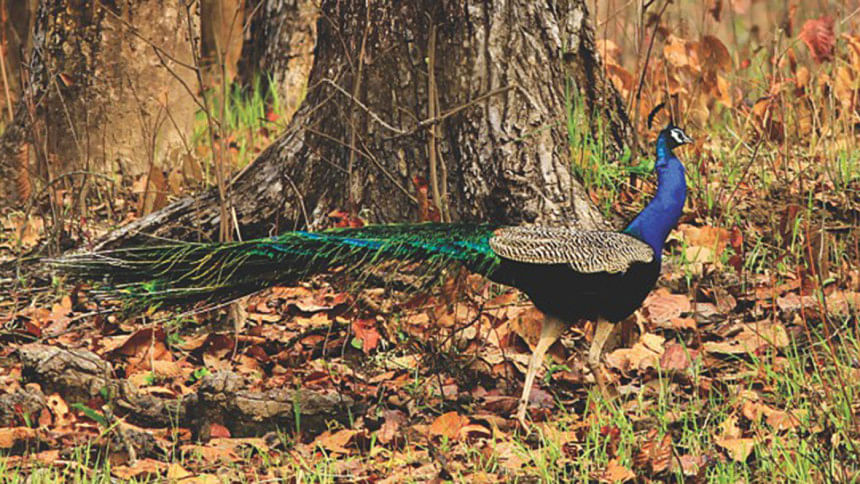

I grew up reading the haunting stories of man-eating tigers written by the great Jim Corbett or the rousing adventures of Salim Ali spanning throughout the Indian Subcontinent documenting unknown birds. Their incredible portrayals of the unique, unscratched, unbroken and unfathomable wild India and Bengal left me fascinated to the core.
As a teenager I have fancied to ramble through our rainforests, to surmount our dwarf-mountains, to sail across the cryptic narrow creeks of the Sundarbans, to see the splendor of the sundown sitting bewildered by the winding river and to listen to the captivating calls of the night owls in our Sal forests.

The solemnity of being close to nature, the remarkable colors of birds and butterflies and the liquid beauty of the rolling rivers of the Bengal have been genuinely praised by Rabindranath Tagore, Jibanananda Das and many other Bengali polymaths in their poems, songs and novels.
Cherishing those beautiful verses and stories of endless wilderness in my mind and soul, I stepped out to explore what I have read in those dusty old pages and to craft those words into reality.
I imagined a dark-forest where sunlight would be blocked in the top canopy; moisture would be entombed in the lower canopies, the litters on the forest floor would be soggy where insignificant life would flourish and birds would fly without fear.
The reality revealed something different -- most forests in the northeast are thinned, trimmed, tortured and thus threatened, where sunlight slickly touches the ground and the foliage on the forest floor is dry enough to crunch and crumble under your feet as you walk through it.
With the destruction of forests and pressure of hunting we have lost Tigers, Bears and Gaur in mid-19th century. There have been reports of Sumatran Rhinoceros from northeast Bangladesh in the 18th century and the last record of the Great Hornbill from Lawachara National Park was in 1990.
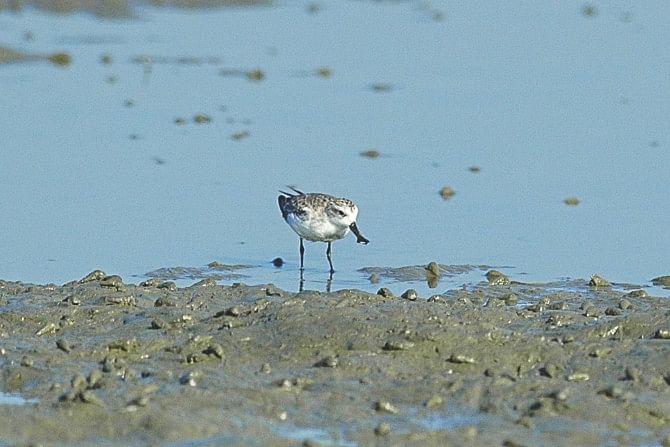
Rural Bengal is still green with miles of paddy fields but not the kind of green I wanted to see, there are hardly any trees left, and even if there are trees – they are mostly nonnative Acacias and Eucalyptuses planted in unflattering rows. The dry plain land of north-west Bangladesh was a heaven for mega fauna even a few decades ago; there were Striped Hyenas and Blackbucks until the end of 19th century, Gray Wolfs and Nilgais until the 1940s.
All those stories from the past puzzled me much till I passed through our rivers and streams, freshwater lakes and marshes, haors, baors, beels and estuarine systems with extensive mangrove swamps. Most of the inland wetlands are now converted to agricultural fields and other development pushing once common species to the last remaining pockets of wetlands in northeast Bangladesh. The Cotton Pygmy Goose (Balihash) once occurred in every village, in every wetland but now has become a rarity. I imagine that the Pink-headed Duck was also common in the 18th century but now globally extinct and last confirmed record from Bangladesh was near Benapole in 1923. The incredible Indian Peafowl occurred in our Sal forests and existed until the early 1980s.
I believed that the forests of the Chittagong Hill Tracts would be so thick that one would see sunrise or sunset only from a few vantage points. The foliage would be so dense and the trunks of trees would be so huge that it would obscure the horizon. Windfall or fire would poke holes in the forest and the tree canopy would be closed for hundreds of square miles. Tigers, Elephants and Rhinoceros would rule the ground and bird of prey would master the sky. The history of CHT is indifferent from my imagination; the last Sumatran Rhinoceros was captured from there in 1868.
All is not gone from our land. Our forest in the northeast still echo with magical calls of the Endangered Hollock Gibbons and Elongated Tortoises still twist the leaf litter to find fallen fruits. The mighty Sundarbans still supports our last Tigers and the murky waterways still hold globally threatened Ganges River Dolphins and Masked Finfoots. Elephants still silently wander through the Jhum lands and some claim that the Tigers still occur in remote CHT. Asiatic Wild Dogs or Dhoals still hunt in packs, Clouded Leopards still skulk and the Great Hornbills yet make whooshing sound while taking off high in the canopies of Kassalong and Sangu-Matamuhuri Reserve Forests, CHT.
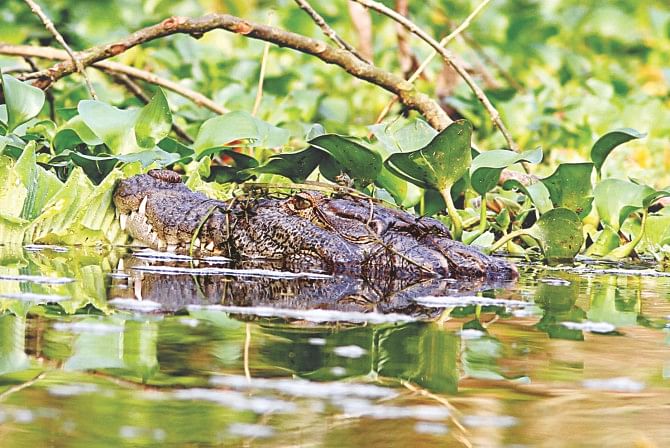
Our freshwater and coastal wetlands are still home to the critically endangered species like the Baer's Pochard and the Spoon-billed Sandpiper. Padma and Jamuna rivers have undisturbed sandbanks where riverine birds nest and possibly the Gharial still basks in the sun.
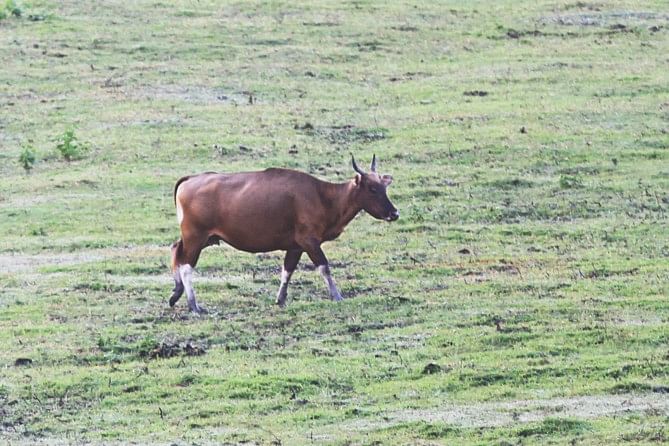
Our country has already lost a majority of her biological diversities; we cannot afford to take on any more loss. Is it too late for interventions to preserve whatever is left of the Bengal, and can there be measures taken to put an end to the destruction? Is it too late to protect the green Bengal that so many poets have romanticized about? Will Jibanananda Das not get to return to the Bengal and listen to the cry of a Spotted Owlet from a Shimul branch? Will we not find him amidst herons returning to their nests in the darkness? Will the shrilling calls of cicadas during dull summer afternoons not sting Tagore's senses anymore?
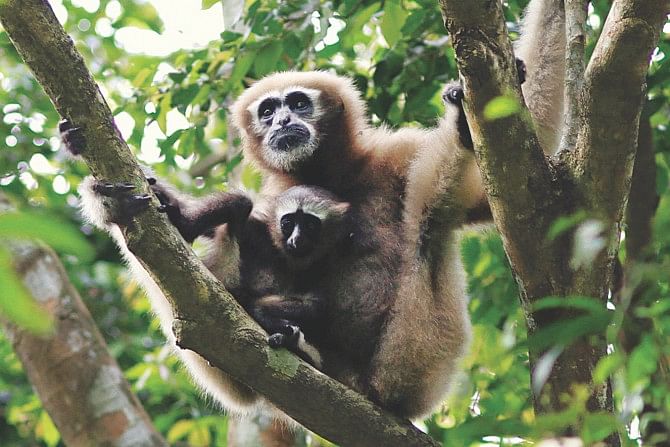
All hope is not lost yet, we can still conserve and restore what is left and leave the chance for our predecessors to love and cherish the sobuj Bangladesh that we know as home. Bangladesh has seen enough damage to its resources even prior and post 1971 and now 42 years after liberation, perhaps it is time to stop the selfish agendas, cutting and destroying and initiate the restoration what was once already there, for at least the chance of a greener tomorrow.

 For all latest news, follow The Daily Star's Google News channel.
For all latest news, follow The Daily Star's Google News channel. 








Comments